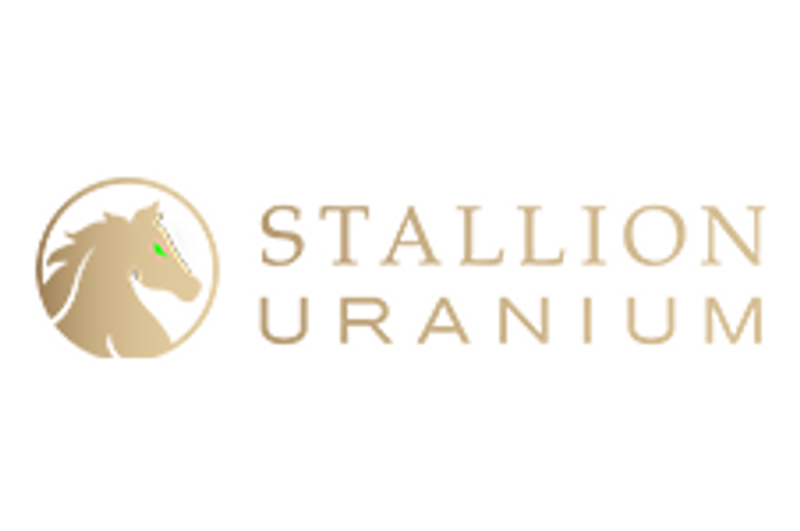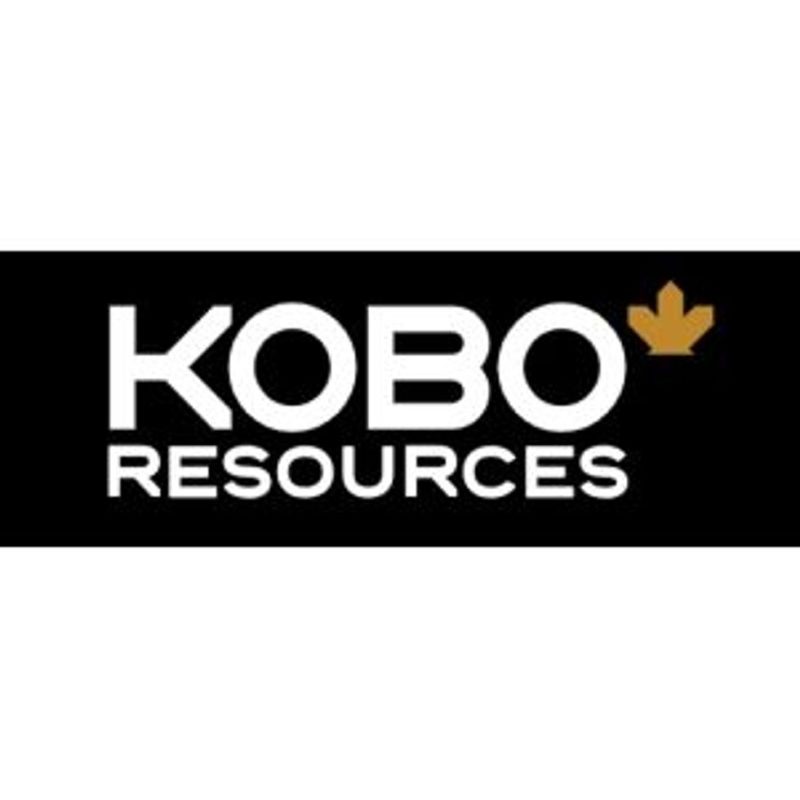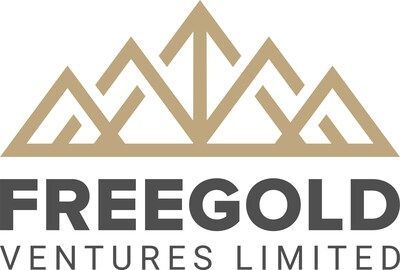- All reported holes intersected gold mineralization, reinforcing continuity and improving structural understanding at the Jagger Zone
- Results support the Company’s systematic exploration and targeting approach for further resource definition at Kossou

Kobo Resources Inc. (‘ Kobo’ or the ‘ Company ‘) ( TSX.V: KRI ) is pleased to announce additional diamond drill results from the ongoing exploration program at its 100%-owned Kossou Gold Project (‘ Kossou ‘) in Côte d’Ivoire. Results from the Jagger Zone continue to confirm broad zones of mineralisation and extend the footprint of gold-bearing structures along strike and at depth.
This press release features multimedia. View the full release here: https://www.businesswire.com/news/home/20250619919405/en/
Diamond Drill Results Highlights:
Jagger Zone:
- KDD0081
- 8.0 m at 2.13 g/t Au from 140.0 metres (‘m’), including 2.0 m at 7.00 g/t Au from 140.0 m
- KDD0082
- 30.0 m at 0.64 g/t Au from 128.0 m, including 10.25 m at 0.80 g/t Au, from 128.0 m and 2.0 m at 1.90 g/t Au from 143.0 m
- KDD0083
- 7.0 m at 1.18 g/t Au from 123.0 m
- 6.0 m at 2.07 g/t Au from 138.0 m, including 1.0 m at 8.47 g/t Au from 64.0 m
- 7.3 m at 1.63 g/t Au from 95.0 m
- KDD0084
- 8.0 m at 1.41 g/t Au from 88.0 m
- 21.5* m at 1.14 g/t Au from 106.0 m, including 4.0 m at 1.98 g/t Au from 106.0 m, 4.0 m at 1.27 g/t Au from 115.0 m, and 1.5 m at 4.93 g/t Au from 126.0 m
- KDD0085
- 20.0 m at 1.41* g/t Au from 106.0 m, including 5.0 m at 3.70 g/t Au from 121.0 m and including 2.0 m at 8.47 g/t Au from 123.0 m
Edward Gosselin, CEO and Director of Kobo commented: ‘These latest results reinforce the scale and continuity of gold mineralisation at the Jagger Zone. We are encouraged by the width and tenor of the intercepts, which continue to validate our structural model and further support our systematic exploration approach at Kossou. With drilling still underway across our other high-priority targets, we are well-positioned to advance Kossou toward its maiden resource estimate next year as our exploration work continues.’
Jagger Zone Drilling Highlights Scale and Continuity
Results from seven diamond drill holes (KDD0080 to KDD0086), completed on sections JZ 525 to JZ 725 within the Jagger Zone, have been received and continue to expand the Company’s understanding of this highly prospective target (see Figure 1).
Gold mineralisation is hosted within and along the contacts of quartz feldspar porphyry and diorite intrusions, as well as within sheared contacts of basaltic massive and pillowed flow units. These structures define significant, laterally and vertically continuous gold-bearing zones that are traceable along strike and down dip. Notably, wide mineralised intervals in hole KDD0084, including 8.0 m at 1.41 g/t Au from 88.0 m and 21.5 m at 1.14 g/t Au* from 106.0 m (see Figure 2), demonstrate the presence of multiple stacked gold zones across the broader Jagger Shear Zone.
On section JZ 700, gold mineralisation continues to demonstrate strong continuity and consistent geological associations observed in earlier drilling. Notable intercepts include 20.0 m at 1.41 g/t Au* from 106.0 m, including 5.0 m at 3.70 g/t Au, and 7.0 m at 1.20 g/t Au from 154.0 m. These results support the broader interpretation of the Jagger Shear Zone as a robust, multi-zone gold system and correlate well with previously reported drill holes and surface trench KTR030a (see Figure 3 for Section JZ 700.)
Geological and Structural Setting of Gold Mineralisation at Kossou and the Jagger Zone
Gold mineralisation at Kossou is hosted within a N-S trending, steeply west-dipping deformation corridor associated with the regional Contact Zone Fault, which separates basaltic volcanic flows from volcano-sedimentary rocks. Within this corridor, the ‘Jagger Shear Corridor’, brittle-ductile shear zones act as the primary structural controls on gold emplacement, particularly where lithological contrasts occur between basaltic units and intrusive rocks, including diorite and quartz-feldspar porphyry dykes.
At the Jagger Zone, the main shear system is developed within a zone approximately 70-m wide and is closely associated with intrusive contacts. Drill core analysis has identified multiple quartz vein generations related to mineralisation. The V1 vein set consists of quartz veins and veinlets parallel to the S1 foliation, commonly occurring within the main shear zones and bearing gold. The dominant mineralized structures, however, are V2A veins, which trend west-northwest to northwest and are prominent both within and adjacent to the shears. A secondary vein set, V2B, is characterized by sub-horizontal hairline fractures and veinlets, which carry only sporadic gold mineralisation.
Drilling to date indicates that gold mineralisation pinches and swells along strike and at depth, consistent with structurally controlled orogenic gold systems commonly found within the Birimian terrane of West Africa.
Table 1: Summary of Significant Diamond Drill Hole Results
|
BHID
|
East
|
North
|
Elev.
|
Az.
|
Dip
|
Length
|
|
From
(m)
|
To (m)
|
Int.
(m)
|
Au
g/t
|
Target
|
|
KDD0080
|
228997
|
775340
|
338
|
70
|
-50
|
233.05
|
|
32.00
|
34.00
|
2.00
|
1.80
|
Jagger
|
|
|
|
|
|
|
|
|
|
49.00
|
51.00
|
2.00
|
2.18
|
Jagger
|
|
|
|
|
|
|
|
|
|
60.00
|
61.00
|
1.00
|
2.31
|
Jagger
|
|
|
|
|
|
|
|
|
|
70.00
|
76.00
|
6.00
|
0.91
|
Jagger
|
|
|
|
|
|
|
|
|
|
100.00
|
102.20
|
2.20
|
0.99
|
Jagger
|
|
|
|
|
|
|
|
|
|
115.00
|
117.00
|
2.00
|
0.59
|
Jagger
|
|
|
|
|
|
|
|
|
|
126.00
|
127.00
|
1.00
|
1.86
|
Jagger
|
|
|
|
|
|
|
|
|
|
181.00
|
182.00
|
1.00
|
1.10
|
Jagger
|
|
|
|
|
|
|
|
|
|
201.00
|
207.05
|
6.05
|
0.67
|
Jagger
|
|
|
|
|
|
|
|
|
incl.
|
205.00
|
207.05
|
2.05
|
1.43
|
Jagger
|
|
|
|
|
|
|
|
|
|
221.85
|
223.00
|
1.15
|
1.19
|
Jagger
|
|
KDD0081
|
228958
|
775353
|
333
|
70
|
-50
|
266.05
|
|
31.00
|
32.00
|
1.00
|
2.02
|
Jagger
|
|
|
|
|
|
|
|
|
|
45.00
|
46.00
|
1.00
|
1.52
|
Jagger
|
|
|
|
|
|
|
|
|
|
70.00
|
72.40
|
2.40
|
1.04
|
Jagger
|
|
|
|
|
|
|
|
|
|
78.00
|
80.00
|
2.00
|
0.67
|
Jagger
|
|
|
|
|
|
|
|
|
|
123.00
|
124.00
|
1.00
|
1.49
|
Jagger
|
|
|
|
|
|
|
|
|
|
130.00
|
133.00
|
3.00
|
1.15
|
Jagger
|
|
|
|
|
|
|
|
|
|
140.00
|
148.00
|
8.00
|
2.13
|
Jagger
|
|
|
|
|
|
|
|
|
incl.
|
140.00
|
142.00
|
2.00
|
7.00
|
Jagger
|
|
|
|
|
|
|
|
|
|
175.10
|
176.20
|
1.10
|
1.79
|
Jagger
|
|
KDD0082
|
228973
|
775257
|
364
|
70
|
-50
|
293.05
|
|
22.00
|
23.00
|
1.00
|
1.51
|
Jagger
|
|
|
|
|
|
|
|
|
|
104.00
|
105.00
|
1.00
|
6.61
|
Jagger
|
|
|
|
|
|
|
|
|
|
110.00
|
111.00
|
1.00
|
1.42
|
Jagger
|
|
|
|
|
|
|
|
|
|
128.00
|
158.00
|
30.00
|
0.64*
|
Jagger
|
|
|
|
|
|
|
|
|
incl.
|
128.00
|
138.25
|
10.25
|
0.80
|
Jagger
|
|
|
|
|
|
|
|
|
incl.
|
143.00
|
145.00
|
2.00
|
1.90
|
Jagger
|
|
|
|
|
|
|
|
|
incl.
|
148.00
|
158.00
|
10.00
|
0.60
|
Jagger
|
|
|
|
|
|
|
|
|
|
161.40
|
164.00
|
2.60
|
0.65
|
Jagger
|
|
KDD0083
|
229013
|
775240
|
361
|
70
|
-50
|
236.05
|
|
32.00
|
33.00
|
1.00
|
3.73
|
Jagger
|
|
|
|
|
|
|
|
|
|
62.00
|
63.00
|
1.00
|
3.17
|
Jagger
|
|
|
|
|
|
|
|
|
|
71.00
|
72.00
|
1.00
|
8.42
|
Jagger
|
|
|
|
|
|
|
|
|
|
80.00
|
84.00
|
4.00
|
0.87
|
Jagger
|
|
|
|
|
|
|
|
|
|
100.00
|
101.00
|
1.00
|
1.33
|
Jagger
|
|
|
|
|
|
|
|
|
|
104.00
|
105.00
|
2.00
|
1.29
|
Jagger
|
|
|
|
|
|
|
|
|
|
109.40
|
117.00
|
7.60
|
0.35
|
Jagger
|
|
|
|
|
|
|
|
|
|
123.00
|
130.00
|
7.00
|
1.18
|
Jagger
|
|
|
|
|
|
|
|
|
|
138.00
|
144.00
|
6.00
|
2.07
|
Jagger
|
|
|
|
|
|
|
|
|
|
161.00
|
163.60
|
2.60
|
1.04
|
Jagger
|
|
KDD0084
|
229018
|
775216
|
361
|
70
|
-50
|
164.05
|
|
67.00
|
69.00
|
2.00
|
0.83
|
Jagger
|
|
|
|
|
|
|
|
|
|
80.00
|
83.00
|
3.00
|
1.00
|
Jagger
|
|
|
|
|
|
|
|
|
|
88.00
|
96.00
|
8.00
|
1.41
|
Jagger
|
|
|
|
|
|
|
|
|
|
106.00
|
127.50
|
21.50
|
1.14*
|
Jagger
|
|
|
|
|
|
|
|
|
incl.
|
106.00
|
110.00
|
4.00
|
1.99
|
Jagger
|
|
|
|
|
|
|
|
|
incl.
|
115.00
|
119.00
|
4.00
|
1.27
|
Jagger
|
|
|
|
|
|
|
|
|
incl.
|
126.00
|
127.50
|
1.50
|
4.93
|
Jagger
|
|
KDD0085
|
228982
|
775175
|
358
|
70
|
-50
|
182.05
|
|
83.00
|
84.00
|
1.00
|
2.38
|
Jagger
|
|
|
|
|
|
|
|
|
|
106.00
|
126.00
|
20.00
|
1.41*
|
Jagger
|
|
|
|
|
|
|
|
|
incl.
|
113.00
|
117.00
|
4.00
|
1.25
|
Jagger
|
|
|
|
|
|
|
|
|
incl.
|
121.00
|
126.00
|
5.00
|
3.70
|
Jagger
|
|
|
|
|
|
|
|
|
incl.
|
123.00
|
125.00
|
2.00
|
8.47
|
Jagger
|
|
|
|
|
|
|
|
|
|
154.00
|
161.00
|
7.00
|
1.20
|
Jagger
|
|
|
|
|
|
|
|
|
|
169.00
|
172.00
|
3.00
|
1.38
|
Jagger
|
|
KDD0086
|
229024
|
775165
|
345
|
70
|
-50
|
143.00
|
|
71.60
|
73.00
|
1.40
|
1.63
|
Jagger
|
|
|
|
|
|
|
|
|
|
82.00
|
89.00
|
7.00
|
1.04
|
Jagger
|
|
|
|
|
|
|
|
|
|
95.00
|
107.00
|
12.00
|
0.68
|
Jagger
|
|
|
|
|
|
|
|
|
|
118.00
|
123.00
|
5.00
|
0.69
|
Jagger
|
|
Notes:
|
|
Cut-off using 2.0 m at 0.30 g/t Au
|
|
Intervals are reported with no more than 3 m of internal dilution of less than 0.3 g/t Au except where indicated*
|
An accurate dip and strike and controls of mineralisation are unconfirmed at this time and the true width of mineralisation are unconfirmed at this time. Drill holes are planned to intersect mineralised zones perpendicular to interpreted targets. All intercepts reported are downhole distances.
The Company also reports the filing of its audited consolidated financial statements for the twelve-month period ended March 31, 2025, and related management’s discussion and analysis. Copies of these financial statements and related management’s discussion and analysis can be found on the Company’s issuer profile on SEDAR+ at www.sedarplus.ca as well as on the Company’s website at www.koboresources.com .
Sampling, QA/QC, and Analytical Procedures
Drill core was logged and sampled by Kobo personnel at site. Drill cores were sawn in half, with one half remaining in the core box and the other half secured into new plastic sample bags with sample number tickets. Core samples are drilled HQ to below oxidation level and then is reduced to NQ for the remainder of the drill hole. Samples are transported to the SGS Côte d’Ivoire facility in Yamoussoukro by Kobo personnel where the entire sample was prepared for analysis (prep code PRP86/PRP94). Sample splits of 50 grams were then analysed for gold using 50g Fire Assay as per SGS Geochem Method FAA505. QA/QC procedures for the drill program include insertion of a certificated standards every 20 samples, a blank every 20 samples and a duplicate sample (split of the 1 m original sample) every 20 samples. All QAQC control samples returned values within acceptable limits.
Review of Technical Information
The scientific and technical information in this press release has been reviewed and approved by Paul Sarjeant, P.Geo., who is a Qualified Persons as defined in National Instrument 43-101. Mr. Sarjeant is the President and Chief Operating Officer and Director of Kobo.
About Kobo Resources Inc.
Kobo Resources is a growth-focused gold exploration company with a compelling new gold discovery in Côte d’Ivoire, one of West Africa’s most prolific and developing gold districts, hosting several multi-million-ounce gold mines. The Company’s 100%-owned Kossou Gold Project is located approximately 20 km northwest of the capital city of Yamoussoukro and is directly adjacent to one of the region’s largest gold mines with established processing facilities.
With over 15,000 metres of diamond drilling, nearly 5,900 metres of reverse circulation (RC) drilling, and 5,900 metres of trenching completed since 2023, Kobo has made significant progress in defining the scale and prospectivity of its Kossou’s Gold Project. Exploration has focused on multiple high-priority targets within a 9+ km strike length of highly prospective gold-in-soil geochemical anomalies, with drilling confirming extensive mineralisation at the Jagger, Road Cut, and Kadie Zones. The latest phase of drilling has further refined structural controls on gold mineralisation, setting the stage for the next phase of systematic exploration and resource development.
Beyond Kossou, the Company is advancing exploration at its Kotobi Permit and is actively expanding its land position in Côte d’Ivoire with prospective ground, aligning with its strategic vision for long-term growth in-country. Kobo remains committed to identifying and developing new opportunities to enhance its exploration portfolio within highly prospective gold regions of West Africa. Kobo offers investors the exciting combination of high-quality gold prospects led by an experienced leadership team with in-country experience. Kobo’s common shares trade on the TSX Venture Exchange under the symbol ‘KRI’. For more information, please visit www.koboresources.com .
Twitter: @KoboResources | LinkedIn: Kobo Resources Inc.
NEITHER THE TSXV NOR ITS REGULATION SERVICES PROVIDER (AS THAT TERM IS DEFINED IN THE POLICIES OF THE TSXV) ACCEPTS RESPONSIBILITY FOR THE ADEQUACY OR ACCURACY OF THIS RELEASE.
Cautionary Statement on Forward-looking Information:
This news release contains ‘forward-looking information’ and ‘forward-looking statements’ (collectively, ‘forward-looking statements’) within the meaning of the applicable Canadian securities legislation. All statements, other than statements of historical fact, are forward-looking statements and are based on expectations, estimates and projections as at the date of this news release. Any statement that involves discussions with respect to predictions, expectations, beliefs, plans, projections, objectives, assumptions, future events or performance (often but not always using phrases such as ‘expects’, or ‘does not expect’, ‘is expected’, ‘anticipates’ or ‘does not anticipate’, ‘plans’, ‘budget’, ‘scheduled’, ‘forecasts’, ‘estimates’, ‘believes’ or ‘intends’ or variations of such words and phrases or stating that certain actions, events or results ‘may’ or ‘could’, ‘would’, ‘might’ or ‘will’ be taken to occur or be achieved) are not statements of historical fact and may be forward-looking statements Forward-looking statements are necessarily based upon a number of estimates and assumptions that, while considered reasonable, are subject to known and unknown risks, uncertainties, and other factors which may cause the actual results and future events to differ materially from those expressed or implied by such forward-looking statements. Such factors include, but are not limited to: general business, economic, competitive, political and social uncertainties; and the delay or failure to receive board, shareholder or regulatory approvals. There can be no assurance that such statements will prove to be accurate, as actual results and future events could differ materially from those anticipated in such statements. Accordingly, readers should not place undue reliance on the forward-looking statements and information contained in this news release. Except as required by law, Kobo assumes no obligation and/or liability to update the forward-looking statements of beliefs, opinions, projections, or other factors, should they change, except as required by law.

View source version on businesswire.com: https://www.businesswire.com/news/home/20250619919405/en/
For further information, please contact:
Edward Gosselin
Chief Executive Officer and Director
1-418-609-3587
ir@kobores.com



















 yield over 90% gold recovery
yield over 90% gold recovery 









